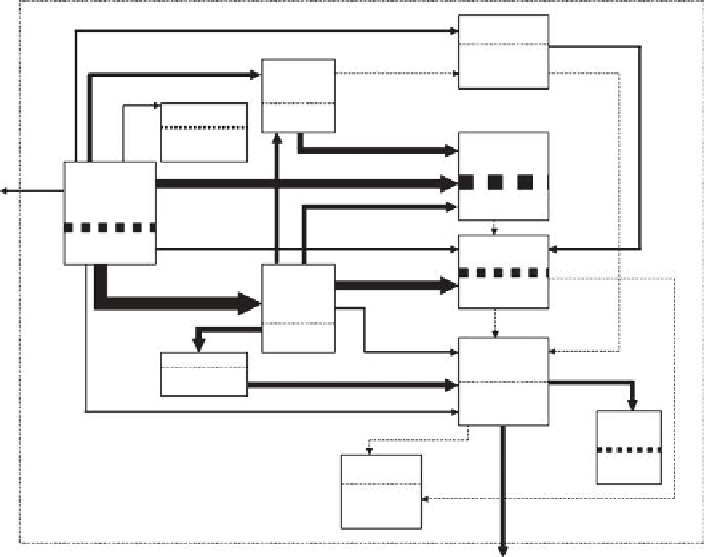Biomedical Engineering Reference
In-Depth Information
1.0
Atmosphere
0.9
0.1
dt
1.3
Waste
incineration
plant (WIP)
0.0
0.0
0.5
Recycling
dt
0.0
dt
-0.5
4.2
Landfill
Production,
manufacturing,
consumption
(PMC)
9.0
2.7
0.6
dt
15.9
2.9
0.0
0.9
dt
-12.6
Soil
Sewage
treatment
plant (STP)
9.6
19.9
dt
11.3
4.0
dt
0.0
0.0
0.8
Surface
water
STP-untreated
dt
0.0
2.5
4.0
0.2
dt
0.0
Sediments
<0.05
Groundwater
2.5
dt
2.5
<0.05
Nano-Ag
dt
<0.05
FIGURE 15.12
Material-flow model for nano-Ag in the EU. (Based on data reported from
Gottsehalk, F. et al.,
Environ. Sci. Technol
., 43, 9216-9222, 2009.)
15.5 CONCLUSIONS
This chapter shows that there is already some information available about release
processes from commercial products containing ENM. However, in the majority
of the studies no nano-specific methods were used. The presence and identity of
nanoscaled materials was in some studies confirmed using electron microscopy,
whereas the magnitude of release was determined by bulk chemical methods after
some separation of particles and dissolved metals. By combining both methods,
some conclusions regarding the release of nanomaterials can be made, but in many
cases the exact identity of the released nanomaterials remains vague. It is clear, how-
ever, that the majority of the released materials is not in the form of single dispersed
ENM and that a multitude of different matrix fragments, agglomerates, transforma-
tion products, and dissolved metals are found in the released fraction. Only in a few
studies single ENM were detected in the leachates. More studies using advanced
analytical methods are clearly needed to obtain more information on the identity and
mass-fractionated concentrations of the released materials. Also more studies under
real-world conditions are needed that are able to provide sufficient information for
modeling and environmental risk assessment.

Search WWH ::

Custom Search